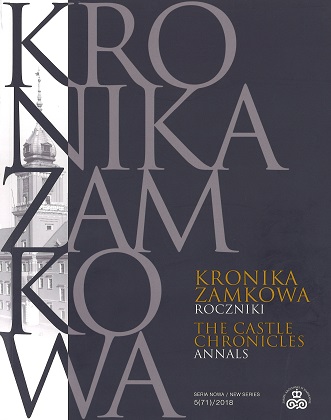Ceramiczne wizerunki króla Stanisława Augusta jako wyraz gustu epoki.
Ceramic portraits of the King Stanislaus Augustus as a token of the taste of the era
Author(s): Anna SzkurłatSubject(s): Fine Arts / Performing Arts, History of Art
Published by: Arx Regia® Wydawnictwo Zamku Królewskiego w Warszawie – Muzeum
Keywords: ceramic portraiture; silhouette; en grisaille; Stanislaus Augustus; Meissen manufactory; Berlin manufactory
Summary/Abstract: Portraiture is an important genre of the arts, especially for rulers. Portraits were used to decorate craft objects, and since early 18th c. also European porcelain items. Portrait miniatures (painted or relief) were placed mainly on cups or on all coffee and tea sets vessels, goblets and snuffboxes. These portraits were patterned on medals, coins, graphic designs. Paintings were less often used as models. The “fragile” portraits of Stanislaus Augustus were part and parcel of the trend of ceramic portraiture, fashionable in the last third of the 18th c. At present, we know 13 ceramic images of Stanislaus Augu- stus (miniatures, reliefs and busts). Two extant identical busts in biscuit porcelain (in the collection of the National Museum in Warsaw and The Royal Łazienki Museum) were most likely made in Paris after some unidentified model from the 1780s. Relief portraits of Stanislaus Augustus were made by Wedgwood (e.g. objects in the National Museum in Krakow, Castle Museum in Malbork and the National Museum in Warsaw) and were patterned on two different graphic models and one medal. The only known colour portrait of Stanislaus Augustus was used by Josef Anibal Hesse to decorate the bottom of the lid of the snuffbox of Meissen porcelain, and was patterned on some unidentified painting. Sets of sometimes lidded cups with saucers bearing painted portraits of Stanislaus Augustus were made in the two leading German manufactories (Meissen and Berlin) ca. 1780, according to different graphic patterns. All the objects have analogous forms and similar ornamental decoration, while the ancient-style bust of the king, en grisaille or, less often, in silhouette, was no different than the convention adopted by porcelain decorators at that time. Saucers and lids were additionally decorated with the royal monogram, coat of arms or insignia. The Royal Porcelain Manufactory in Berlin made the following objects: preserved in the collection of the Royal Castle in Warsaw – Museum, regarded as wartime losses of the collection of the National Museum in Warsaw and recorded in the list of personal effects of Stanislaus Augustus. The Royal Porcelain Manufactory in Meissen made at least four sets of this type of vessels, only one of which has been preserved in its entirety (in the collection of the National Museum in Krakow). Another one, nearly identical, was in 1913 owned by the collector Bohdan Wydżga, only a saucer and a lid have survived from a third one (from the pre-war collection of the National Museum in Warsaw), while the fourth one was listed in the king’s estate.
Journal: Kronika Zamkowa. Roczniki
- Issue Year: 5/2018
- Issue No: 5
- Page Range: 171-190
- Page Count: 20
- Language: Polish

